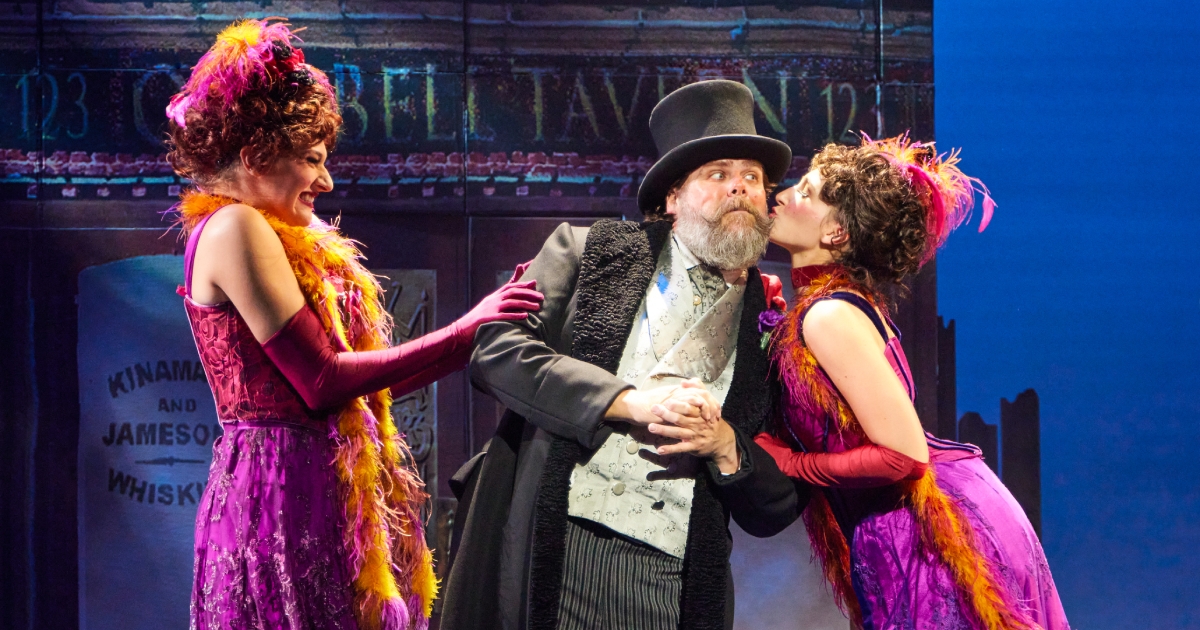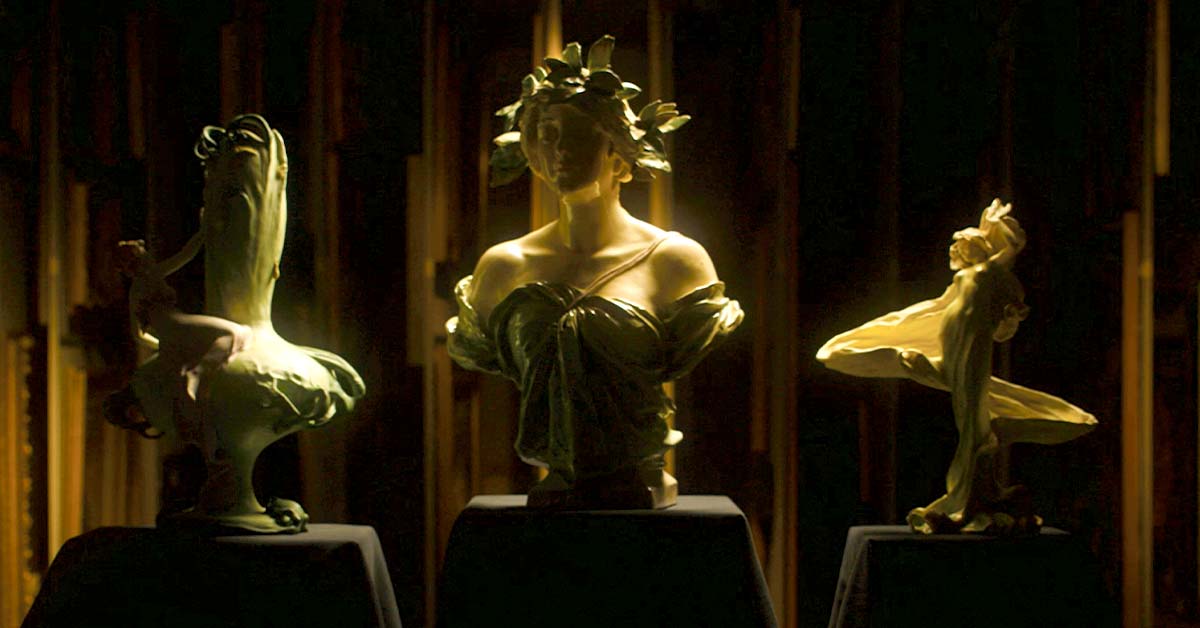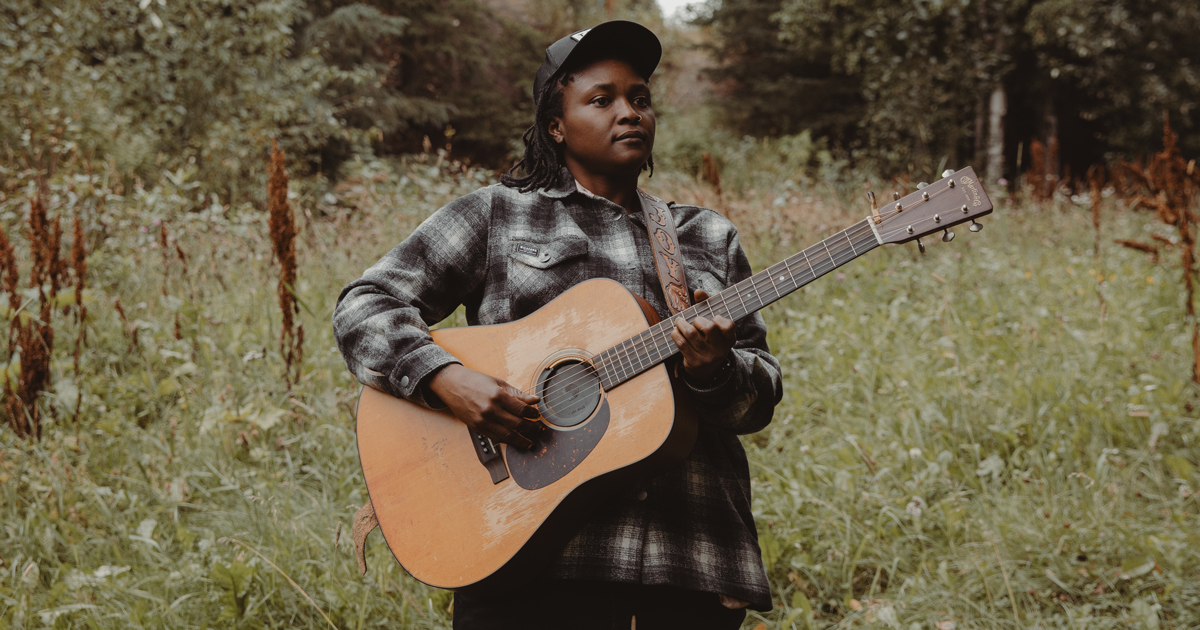As a culture, we love transformation. We clamor for stories that involve improvement, of transition to a better place, makeovers of one variety or another. And one of the most notable of these tales is that penned by George Bernard Shaw in the play Pygmalion, known to most of us as its gorgeous, classic musical adaptation My Fair Lady (adapted for stage from the screen by Alan Jay Lerner and Frederick Loewe), which has recently undergone its own update—to streamline its length as well as make Shaw’s original class critique and plea for the proper use of the English language a little less sexist.
The Lincoln Center Theater production tour is currently at DeVos Hall in Grand Rapids via Broadway Grand Rapids, and it’s gorgeous. It brings to life so much of what we love about classic musical theatre. It’s visually stunning, with huge, elaborate sets, sumptuous costumes, a marvelous orchestra in full command of the score that has us walking out of the theater with a pleasant tune in our heads, as well as some wonderful singing, and a terrific chorus that wows us with big, lovely song-and-dance numbers.
In many ways, these are the most important elements of a big, touring show, and this production nails them. However, while the story is told magnificently through music and vivacious visual elements, the exceedingly young cast doesn’t quite communicate the central transformation—a love story—how we expect.
That love story, of course, centers on elocutionist Henry Higgins, a confirmed bachelor who, with the assistance of his friend Colonel Pickering, enter a wager that they can successfully transform a common Cockney flower girl, Eliza Doolittle, into a proper lady so completely that royalty wouldn’t know the difference. Much as in the Greek myth Pygmalian in which a sculptor chisels his ideal woman only to fall in love with her, Higgins and Eliza, despite his unrelenting demands and her difficulties being treated inhumanely while learning to speak, move and otherwise embody a woman of a different class than the one into which she was born, fall for each other.
In this production, this love story is told, but unconvincingly. This Henry Higgins (Jonathan Grunert) and Eliza Doolittle (Madeline Powell) are surprisingly young and cartoonish. His flat-footedness is often funny but he speaks robotically, at times like a fay Kennedy and other times slightly Australian. The vowels are not what one might expect from an educated Edwardian gentleman. She is largely incomprehensible before her transformation and speaks in a terrifically affected way, as if never recovering from her sing-song “Rain in Spain” revelation in which she transforms her vowels and never having spit out the marbles Higgins forced her to speak with in her mouth. She never quite makes the language her own, instead continuing to mimic his robotic cadences yet in a more feminine way.
One can’t help but think Bartlett Sher directed them this way deliberately, perhaps to transform the story of transformation to make a different statement on class and gender than the one Shaw originally made. You cannot fundamentally change someone and if you treat a woman badly, she’ll never be yours.
This is an interesting twist, indeed; however, it can be hard to watch two leads who don’t make you fall in love with them or believe they’ve undergone real emotional change.
The change here is represented visually, however, and it’s incredibly satisfying to watch the sets change from dark, dingy street scenes to an elaborate, masculine library to a lighter, more neutral horse race on which lighting creates wonderful emotional shifts, to bright, bold colorful brothel and ballroom scenes. Michael Yeargan’s sets, Catherine Zuber’s costumes, Donald Holder’s lights, Christopher Gatelli’s choreography are resplendent and central to the storytelling here. They make the story and character arcs clear right before our eyes, and it’s an interesting contrast to what isn’t happening in terms of acting.
However, there are marvelous performances in their own right here. The chorus is universally wonderful, and the many big song-and-dance numbers are utterly delightful, memorable, and easily worth the cost of admission. Smaller numbers, like the harmonies made by the “Loverly” quartet (William Warren Carver, Richard Coleman, Mark Mitrano, and Charlie Tingen) transcend the grand, largely cartoonish performances with subtle beauty.
Other outstanding individual performances include John Adkison’s warm, comedically subversive Colonel Pickering; Nathan Haltiwanger asFreddy Eynsford-Hill, a gorgeous tenor whose lover boy character rings true; Michael Hegarty as a bold, brash, funny Alfred P. Doolittle; and Becky Saunders’ Mrs. Higgins, the classiest, truest “lady” and grand dame on stage.
The full orchestra, directed by David Andrews Rogers, sounds brilliant, and makes the splendid score even grander than we remember.
So much of what we’ve come to expect and love about a grand, classic musical is in full force with this My Fair Lady. It’s a transformation tale we know and love transformed, retaining the grandest of elements while also changing the emotional heart of the story to say something larger about how classic romance might be interpreted and updated, for better or for worse.
My Fair Lady
DeVos Performance Hall
April 11-16
https://broadwaygrandrapids.com/my-fair-lady





